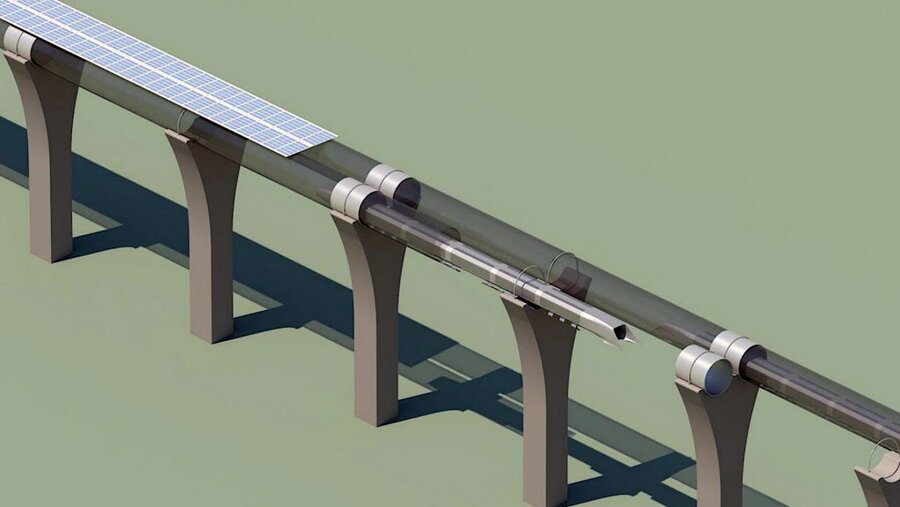Elon Musk's Hyperloop transportation system? It will be tested this year.
Loading...
The idea of packing passengers into pods and shooting them at 800 miles per hour through tubes between Los Angeles and San Francisco is starting to look less like science fiction and a bit more like a reality, albeit a distant one.
This year, three companies are promising to build tracks to test their versions of this futuristic transportation system, called Hyperloop. It was first promoted in 2013 by Elon Musk, indomitable builder of rockets (SpaceX) and luxury electric cars (Tesla).
Though Mr. Musk decided not to commercialize the Hyperloop, instead challenging other private companies to do so, his aerospace company, SpaceX, will build a one-mile test track near its Hawthorne, Calif., headquarters. It will be up in time for the summer finale of SpaceX's year-long Hyperloop design competition for student and independent engineering teams.
Two other California companies that are not related to each other but bear nearly identical names – Hyperloop Transportation Technologies (HTT) and Hyperloop Technologies – have also promised to build tracks to test their own early Hyperloop designs.
Hyperloop Technologies was founded in 2015 and is now armed with venture capital, according to its website. It also lists a team of 80 people, and says it will build by the end of this year a two-mile tube in North Las Vegas, Nevada to test a levitating pod that will be able to accelerate to 700 miles per hour. This would get passengers from L.A. to San Francisco in less than 30 minutes.
“We have the whole company riveted around achieving our own Kitty Hawk moment,” Rob Lloyd, the company’s new CEO and former Cisco executive, told CNN this month, referring to the town in North Carolina where in 1903 the Wright brothers achieved the first airplane flight.
The other Hyperloop company, HTT, says it will build a 5-mile test track this year in Quay Valley, Calif., halfway between San Francisco and Los Angeles. Wired reported in August that the company, founded in 2013, has 400 “team members” working on the project. These are engineers from places like NASA, Boeing, and SpaceX, who donate time to HTT in exchange for company stock.
“This is not science fiction,” HTT writes in a recruiting message to engineers on its website. “Our feasibility study is nearly complete, and we are planning to build a full scale prototype.”
The Hyperloop was conceived by Musk in a 57-page paper in 2013. In the paper, he envisioned a transportation network of above-ground tubes that could span hundreds of miles and use magnets and fans to propel pods of passengers through depressurized tubes at very high speeds, near the speed of sound. He said it would be cheaper and much more environmentally efficient to operate the Hyperloop, which would be powered by solar energy.








